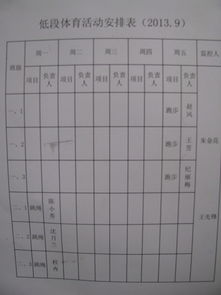The 100meter dash stands as one of the most thrilling and fastpaced events in track and field athletics. This analysis and evaluation delve into the intricacies of this sprint, highlighting key performance metrics and providing insights into the factors that contribute to success.
1.
The start is crucial in the 100meter dash, determining how quickly an athlete can reach top speed. Factors such as explosiveness out of the blocks, drive phase mechanics, and reaction time play significant roles in the overall performance.
2.
The acceleration phase covers the initial 3040 meters of the race. Athletes focus on gradually increasing their stride length and frequency while maintaining proper body mechanics to build momentum efficiently.
3.
Maximal velocity is achieved around the midpoint of the race, where athletes reach their top speed. Proper sprint mechanics, including arm action, leg turnover, and body position, are essential for maintaining peak velocity.
4.
Sustaining topend speed in the latter half of the race is a challenge for sprinters. Factors such as fatigue resistance, relaxation, and maintaining form become critical as athletes strive to finish the race strongly.
5.
Crossing the finish line efficiently involves proper timing and technique. Athletes often utilize a "dip" at the finish, leaning forward to ensure their torso breaks the plane of the finish line first, maximizing their chances of victory.
1.
The most straightforward metric for evaluating performance is the race time. Faster times indicate superior performance, with worldclass sprinters typically finishing under 10 seconds for men and around 11 seconds for women.
2.
Assessing the technical proficiency of athletes throughout each phase of the race provides valuable insights into their overall performance. Factors such as stride length, frequency, arm carriage, and body position contribute to efficient sprinting.
3.
Analyzing how athletes accelerate out of the blocks and maintain speed throughout the race, as well as their ability to manage deceleration towards the finish line, offers a comprehensive view of their sprinting capabilities.
4.
Reaction time measures how quickly an athlete reacts to the starting gun. A faster reaction time gives sprinters a competitive edge by allowing them to initiate their sprint sooner, potentially gaining a crucial advantage over their opponents.
5.
Consistency in performance across multiple races is indicative of an athlete's reliability and adaptability. The ability to deliver consistent performances under varying conditions demonstrates mental fortitude and physical preparedness.

1.
Emphasize proper sprinting mechanics during training sessions, focusing on start technique, acceleration mechanics, and topend speed maintenance. Video analysis and feedback from coaches can help athletes refine their technique.
2.
Implement strength and power training programs to improve explosiveness, muscle strength, and sprintspecific conditioning. Exercises such as squats, deadlifts, plyometrics, and sprint drills can enhance sprinting performance.
3.
Develop strategic race plans tailored to individual strengths and weaknesses. This may involve adjusting pacing strategies, optimizing acceleration patterns, and refining finish techniques to maximize performance potential.
4.
Incorporate mental training techniques such as visualization, goal setting, and focus exercises to enhance raceday performance and cultivate a winning mindset. Mental resilience is as crucial as physical conditioning in sprinting success.
5.
Prioritize adequate rest, nutrition, and recovery strategies to optimize training adaptations and prevent injuries. Proper hydration, nutrition, sleep, and recovery modalities such as massage and stretching are essential for longterm athletic development.
The 100meter dash demands a combination of explosive power, technical proficiency, and mental fortitude from athletes. By analyzing key performance metrics and employing targeted training strategies, sprinters can enhance their competitive edge and strive for peak performance on the track.